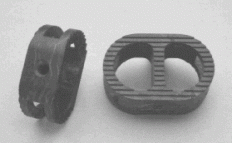The treatment options for “mechanical” low back pain include the following:-
- Involvement in a rehabilitation program & modification of activities
- Pain management
- Lumbar Fusion
a. Anterior Interbody fusion
b. Postero-lateral fusion
c. Combined anterior and posterior fusion
d. Chance of success?
Rehabilitation Program:
If you have had back pain for a significant period and are at the stage of considering surgery you will have received advice, and been referred to a physiotherapist, chiropractor or rehabilitation center by your local doctor for education and training. If this has not occurred you should speak to your local doctor or your surgeon about these forms of treatment.
Lumbar Fusion:
A spinal fusion refers to a surgical procedure, the aim of which is to fuse or join one vertebra to an adjacent vertebra or the sacrum. This is done to eliminate or minimise pain generated by the movement of a painful disc and/or facet joints. This may be achieved in a variety of ways.
It must however, be remembered that successful surgery of this type may well remove the source of the symptoms you have at this time, but will not prevent the degeneration of other levels in the spine. Degeneration may continue to lead to the development of similar symptoms in the future.
The chances of achieving a fusion are optimized by the performance of what has been referred to above as a combined anterior and posterior fusion. The fusion rate with this procedure is significantly higher but the chance of success in relation to relief of pain is only slightly greater. The recovery period and time in hospital is not significantly different.
Anterior Inter-body Fusion (ALIF):
In an anterior spinal fusion the intervertebral disc is removed and the vertebrae fused together via a transverse or vertical incision over the lower abdomen. In this operation the majority of the symptomatic intervertebral disc or discs are removed and replaced with bone. This bone is taken from the front of the pelvis, usually through a separate incision. It may be taken as a large piece, but more commonly small pieces of bone are obtained which are then packed into a hollow implant or cage. The block of bone or the cage is then inserted between the vertebrae.


Where a cage is used, the “cage” provides support to the spine while the bone within it heals and fusion occurs.
In recent years supplementary titanium plate and screw fixation has been used at the time of anterior lumbar interbody fusion in combination with a cage. The supplementary fixation stabilises the spine and improves the fusion rate.
Postero-lateral Fusion:

A Postero-lateral spinal fusion is achieved through an incision in the middle of the back by joining adjacent vertebrae with screws and rods but without interfering with the disc. Small pieces of bone are usually taken from the back of the pelvis, through the same skin incision, and are placed along the back and side of the vertebrae to be fused.
Internal fixation devices generally improve the rate of fusion, but implants of this type are also associated with certain disadvantages and complications and are therefore not always used. When they are used screws, rods or plates can stay in the body forever but in some cases these implants can cause discomfort, irritation of the overlying muscles, become loose, infected or break, in which case they may need to be removed.
Combined Anterior & Posterior Fusion:
A combined anterior and posterior fusion is nothing more than performing both an anterior and postero-lateral fusion at the same time, or at least under the same anaesthetic. The risks for both procedures are the same as if either procedure was done in isolation. The advantage is that the chance of achieving a fusion, and of eliminating the source of symptoms is improved.
Fusion requires a process of healing which is similar to the way broken bones heal, and will take between three and six months to complete.
Chance of Success?
Technical and clinical success are not necessarily the same. Technically we are looking to achieve a solid fusion. The chance of achieving technical success, a solid fusion, with either an anterior or posterior fusion alone is in the order of 70 – 75%. With the combined anterior and posterior fusion or with anterior fusion with supplementary plate and screw fixation, the fusion rate increases to better than 95%
Clinically we are looking to relieve symptoms of back pain, and there is no good correlation between achieving a solid fusion and the relief of symptoms.
The clinical success rate for single or two level fusion by whatever approach is of the order of 70%. Where more than two levels are fused, the success rate decreases considerably.
What to Expect:
Following spinal fusion surgery, by whichever method, it is usual to stand out of bed on the day of surgery and to mobilize progressively afterwards.
Your hospital stay may vary from three to seven days, depending upon the type of surgery performed and your home situation.
It has also been shown that smoking decreases both the chance of achieving a solid fusion and obtaining a successful outcome. Smokers are therefore advised strongly to endeavor to cease smoking before undergoing surgical intervention.
A blood transfusion is hardly ever required these days in routine spinal fusion surgery.
